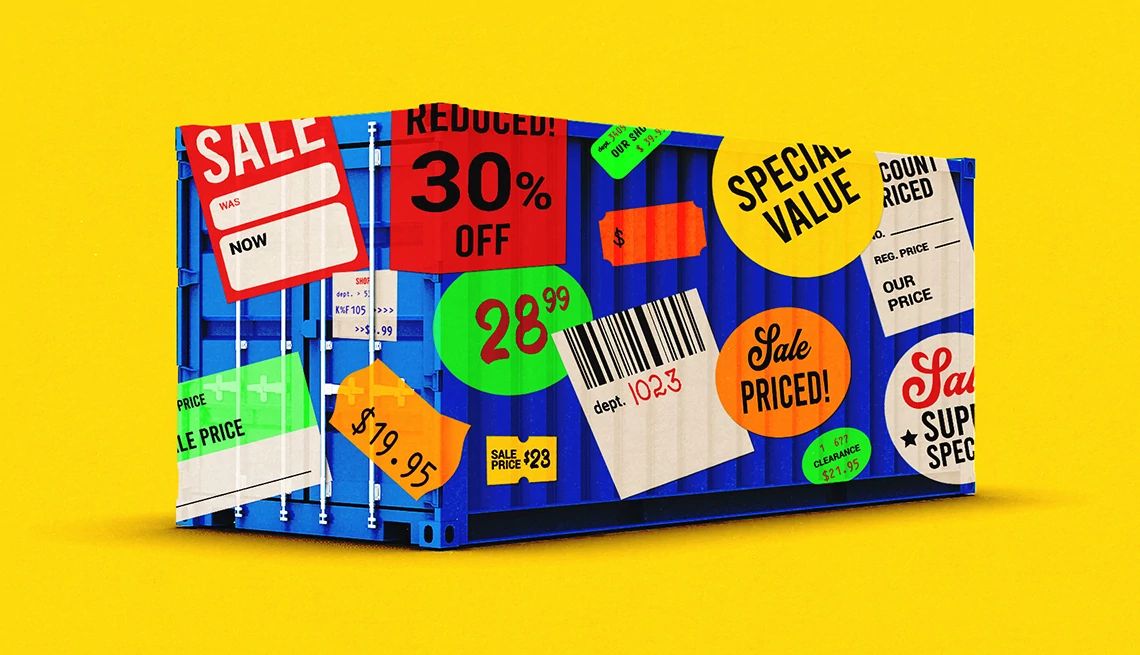AARP Hearing Center


After months of on-again, off-again tariff announcements and negotiations with America’s major trade partners, President Donald Trump’s “reciprocal tariffs” took effect Aug. 7. The sweeping tariff policies slapped higher import taxes on more than 90 countries, including Switzerland (39 percent tariff), Iraq (35 percent), South Africa (30 percent), and Taiwan (20 percent). Trump had already placed a 35 percent tariff on Canadian imports and a 50 percent tariff on Brazilian imports.
Many Americans are wondering how everything will impact their wallets when they go shopping. There’s reason to be concerned: A number of companies have already begun passing on some of the increased costs to customers, and more price hikes could be coming, as U.S. retailers respond to the current and impending tariffs.
For consumers, especially retirees living on fixed incomes, rising prices may require making changes to their shopping habits. “Shoppers will have to adjust because so many products are made outside of the U.S.,” says Jim Wang, founder of personal finance resource WalletHacks.com.
That doesn’t mean deals will disappear entirely, though. “Retail competition is still there, and stores may be willing to take much tighter margins on some products to get you in the door,” Wang says. The key is knowing how to find deals in today’s tariff-rattled retail landscape.
These 10 shopping strategies can help you save money, even with prices rising from tariffs.
Don’t wait to buy big-ticket items you need
You might want to purchase the big-ticket items you were thinking about buying sooner rather than later, while supplies of pre-tariff items are still in stores. “If your laptop is on its last leg, or your dishwasher is getting funky, look for those things now,” says Trae Bodge, founder of shopping advice website TrueTrae.com. Certain electronics, including computers, are currently exempt from Trump’s new tariffs, but that could change on a whim.
If your budget doesn’t allow for a big-ticket purchase now, Bodge suggests considering “buy now, pay later” loans that don’t charge interest on payments made over time. This option might enable you to make a big purchase before prices increase due to tariffs.
Shop seasonal sales
Upcoming holidays such as Labor Day are still expected to bring big sales at several major retailers, including Amazon, Home Depot, Lowe’s, Target and Walmart. These seasonal sales allow you to stock up on basics or buy items you need at lower prices.
Check deal sites
Rather than scour the internet for hours looking for sales and comparing prices, let deal websites do the work for you, advises Jill Sirianni, co-founder of the Frugal Friends podcast and co-author of Buy What You Love Without Going Broke. Sites such as BradsDeals.com, DealNews.com and Slickdeals.net provide daily roundups of discounts on a range of products and allow you to search for offers by category or retailer.
Get deal notifications
Slickdeals lets you set up alerts for when a brand or product you’re interested in goes on sale. You can also find out when your favorite retailers are having sales by signing up for emails or text messages from them directly. “Then you’re always aware of what’s going on,” Bodge says. Bonus: Retailers often offer discount codes for future purchases when you sign up for their emails.


































































More From AARP
25 Great Ways to Save at Warehouse Clubs
Learn how to make the most of a Costco, Sam’s Club or BJ’s Wholesale Club membership
18 Once-Mighty Retailers: Where Are They Now?
These iconic stores are (mostly) gone but not forgotten by nostalgic shoppers
10 Easy Financial Tasks You Can Do in an Hour
How to tackle quick-and-easy steps like shopping for cheaper car insurance